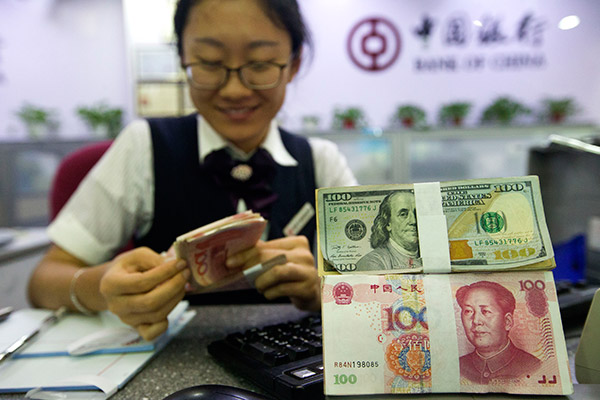 A bank clerk counts currency at a bank outlet in Taiyuan, capital of Shanxi province. (Photo/China News Service by Zhang Yun) Reserve requirement cut possible, but lending facility option available The strong yuan, which hit a 16-month high on Thursday, will create more leeway for China to cut its commercial banks' reserve requirement ratio, but since liquidity remains ample, it is more advisable for the central bank to resort to open market operation for capital management, said a former official from the State Administration of Foreign Exchange. The central parity rate of the yuan, the daily trading reference, was raised to 6.5269 per dollar on Thursday, the ninth consecutive day that it has been lifted. It hit the highest level against the dollar in nearly four months, while both the onshore and offshore spot rates reached a 16-month high. Some economists have argued that liquidity is inadequate in the market, which will do harm to the country's economic recovery. They have suggested cutting the banks' reserve requirement ratio, or the proportion of capital banks must keep aside as reserves, to increase liquidity. "The yuan may continue to strengthen as China's economic growth momentum is stable and the U.S. dollar is relatively weakening," said Guan Tao, former director of the international payments department of SAFE. A stronger yuan will reduce the pressure of capital outflows facing China, making it possible for the country to lower the reserve requirement ratio, he said. As a sign of reduced capital outflow pressure, the nation's foreign exchange reserves rebounded to $3.09 trillion in August, the highest since November 2016, according to SAFE. "The current level of the reserve ratio is still high, which constrains the lending capacity of commercial banks as more credit is needed to support economic growth," said Guan. But he said that using open market operation tools, including the Standing Lending Facility, is more flexible than cutting the reserve requirement ratio if the central bank wants to adjust liquidity compared with the "broad irrigation" of money, he added. The central bank has yet to show any sign of changing the tone of its monetary policy, he said, and relaxing the reserve requirement ratio is not the priority for the central bank's liquidity management. The People's Bank of China, the nation's central bank, said in its quarterly monetary policy report for the first half of the year that it was satisfied with the results of use of such untraditional tools as the SLF, although this increased fluctuations in interbank interest rates. It also said that "market liquidity remained stable". Sheng Songcheng, a central bank advisor, said a cut in the reserve ratio is unlikely in the near term because it will send a signal of liquidity loosening and go against the current neutral monetary policy stance. It has been 18 months since the central bank last cut the reserve requirement ratio to 16.5 percent for large financial institutions and 13 percent for small and medium-sized ones. |
Powered by Discuz! X3.4
© 2001-2013 Comsenz Inc.